A Riot of Good Intentions
Or how a small city green space was killed by countless improvements.
It’s just a half acre, a quarter of a small city block in the Walker’s Point neighborhood where I live. The park on S. 3rd and Walker streets was a flat piece of land with some trees and benches. Old guys from the rooming house across the street hung out there during the day. People walked through the park and rounded off the corner. It was nothing special, even a little derelict.
Then a sculpture arrived and the park was bermed in 2000. The “Stone Bracelet,” by Zoran Mojsilov, was part of the Spirit of Milwaukee Neighborhood Millennium Art Initiative based on the notion that art approved by a committee upgrades a neighborhood.
Berms are the mounded visual barriers typically found between houses and the road in the far suburbs and office parks. In cities berms are barriers to what Jane Jacobs called “eyes on the street” — the visual connectivity that makes parks safer and life generally more engaging in a city.
That this sculpture failed its civic duty is beyond dispute. Besides being butt ugly, the bolder-berm became a nook for muggers and drug dealers. The Spirit of Milwaukee planted a symbol of neglect that looked worse every year while the rest of the park went to seed.
I erased it photographically in a 2000 Milwaukee Magazine feature to demonstrate how much better the park looked without it. The “art” deflates the space, stands in the way of something larger. It’s called negative space in art, which brings clarity to compositions and strengthens the relationships between existing elements. That’s the pleasure of pocket parks, how the city frames them and vice-versa.
People still used the park because space is a scarce resource in a dense urban neighborhood. Russell, a guy from the neighborhood, meandered across the street to his bench on a nice day. Sometimes there would be a couple talking in the park.
Recently more “improvements,” equally questionable, were made. The sculpture is now incorporated into a new project called Paliafito Eco-Arts Park. There’s a new 60-foot, almond-shaped, terraced vegetable garden. It’s part of an urban agriculture program. The kids from the nearby school planted it in the spring but were not around for the harvest.
The next stage of development includes a “decorative rain water harvesting system” connected to a walkable river, and an amphitheater. And, of course, there will be compost bins.
According to Arts @ Large, a nonprofit around the corner that runs after school programs for kids in “eco-literacy and art”, the new park will reduce flooding of basements in the neighborhood, “engage the stakeholders in water related educational programing,” provide artistic opportunities for the stakeholders, and integrate science, technology, engineering, art, and mathematics.
With all these potential benefits Arts @ Large lined up local businesses, funders, and got schools to buy in. This generated more funding and “stakeholders.” It’s quite a lineup. The park is a road map to just about every foundation that supports the arts or the environment in Milwaukee.
Funders include the Antonia Foundation, Bader Philanthropies, Inc., Brico Fund, James E. Dutton Foundation, Fund for Lake Michigan, Greater Milwaukee Foundation – Mary L. Nohl Fund, Hometown Building, Milwaukee Arts Board, Milwaukee Neighborhood Initiative Development Corporation, Milwaukee Public Schools, Spire Engineering, UW-Extension, Bob and Jean Marck Family Fund, Walkers Point Center for the Arts, Wisconsin Arts Board, and the National Endowment for the Arts. And they still need money to complete the project.
The stakeholders include the UW Extension, Reflo Sustainable Water Solutions, Walker’s Point Center for The Arts, Braise restaurant, the Urban Ecology Center, Danceworks, and AWE community art site for mobile art cars.
What’s not to like? The community is pulling itself up by it’s bootstraps toward a culturally rich and ecologically sustainable future.
“It’s all about my commitment to neighborhoods,” Mayor Tom Barrett said at the opening of phase one of the project, “it’s all about commitment to making sure we have people who get to know each other. Because this is how you weave a stronger city, by having more places where people can come safely and get to know each other.”
That’s a great story. But I don’t know who Barrett is talking about.
No one uses the park anymore. I mean, literally not a soul. It’s tragic.
I didn’t believe it at first, so I walked my dog by the park at least twice a day all summer long and took pictures. During that entire time I found just two lone figures in the park, both of whom used to live in Walker’s Point and came to see what the old neighborhood was like. In the picture below a young girl seemed a little lost sitting on rock looking at her cell phone. She came up from Racine on her day off. And an older woman who didn’t want her picture taken told me, “The park used to be a lot friendlier.”
I interviewed the mail carriers for the area and people who live by the park. All of whom noted the alternations to park created a dead zone. Some homeowners are glad to get rid of the riffraff. Others feel like they lost their front yard. Russell died shortly after his bench was taken away.
This is a surprising and counter intuitive result. Urbanists often observe that public spaces are incredibly resilient. Kids will play in a pile of mud. Usually you have to fence vacant lot to keep people out. But Paliafito Park is empty and unused. People won’t even cross the perimeter, almost as if it’s someone else’s front yard. There’s a force field around the place.
Why doesn’t anyone go to Paliafito Eco-Arts Park? The simple answer is all the good intentions filled the park to the brim. There is no space left that draws you in.
Let’s start with the new addition to the park. The raised beds are made of gabion baskets, a takeoff of an erosion-control device by a local artist that has become a eco-branding motif for Walker’s Point. You can also find them at MC2 Park, a small triangle formed when South Water Street bends toward the river at Seeboth Street. These caged rocks make sense and function better in mass on the side of mountains in Japan than they do as an eco-artifact in Walker’s point. Made of plastic, chicken wire, and the rocks, the cages are a hazard to climb over to get at the vegetables. You can’t sit on them either.
Plunked right in the middle of the park, the raised bed is a cognitive obstacle, something you walk around rather than by. It’s totally out of register with its context.
Who put it in the middle of a tiny park? Sean Kiebzak, director of programs at Art @ Large and the manager of the project told me me in an email, “Our partners (City of Milwaukee, Reflo, Century Landscaping, Arts @ Large) collectively agreed on the placement as it is relative to the overall plans for the re-imagining of the park.”
I tried to get Kiebzak tell me if someone drove the process. A designer perhaps, who would respond to the site and the community, and then produce several schemes to get the conversation going? Kiebzak suggested I talk to Justin Hegarty, a water engineer who is the part-time director of Reflow, who did the “conceptual drawings” for the project. Hegarty told me there was also an intern involved who worked with Ursula Twombly of Continuum Architects and Planners. The terraced vegetable garden was provided by John Klatt of Century Landscaping, who according to his website does patios in the suburbs.
Kiebzak said they surveyed the residents, though he couldn’t find one to show me. Perhaps for good reason. According to Hegarty the only thing he could remember from the survey was more than 90 percent of the respondents hated the “Stone Bracelet” sculpture and wanted it removed. But the Milwaukee Arts Board vetoed that idea and told Hegarty and company not to mess with the context of the sculpture, the berm.
So an art park that’s supposed to serve the community starts out with a domineering sculpture the neighborhood hates. Rather than getting rid of something wrong, the impulse to make a place better usually takes the form of adding something new.
It seems like a classic case of too many cooks stirring the broth. An ad hoc committee of stakeholders gather around an empty pot without a recipe for chili. What do you put into it? The city has left over beans (the sculpture) from another failed project. The landscape partner, a friend of the organizing institution, brings the wrong kind of tomatoes. Another partner adds too much salt.
Don’t forget that a “walkable river,” amphitheater, composts bins and “decorative rain water harvesting system” are going to be added on this tiny spot of land. They are still raising money for the project. Arts @ Large may need shelves in the park if someone else comes up another fundable idea.
Existential pleasures like watching the day go by have been displaced by demonstrations of green technology, art, slow food, and the like. Instead of finding your place in it, there’s a lesson plan. Paliafito Eco-Arts Park is as busy as its name, programmed like a classroom instead of a lounge.
In this funding-driven model things just happened, the more the merrier. Obviously they should have started with the space and worked backward. Done what park designers have done for more than a century. Space is the place in cities.
A band of community organizations cannot design a park with no one overseeing the project. The process floundered without someone in charge with the expertise and authority to make the park into a coherent whole.
What happened to this park could never have happened on the East Side or in any neighborhood of middle-class residents. All the non-profits here may have been living up to their organizational missions, but together operated as a kind of colonizing force that took over the space, never mind what neighbors might think. For Ald. Jose Perez, who told me he felt the park needed some kind of improvement, the assemblage of so many well-meaning non-profits seemed a guarantee the results would be good.
The irony is that Walker’s Point is on the upswing and a small green space like this could be wonderful and would have succeeded all by itself. All that was needed was to eliminate the berm and the bad art.
I don’t know how many pocket parks like this the city owns (all the major parks are run by the county), but they can be hugely important, typically making neighborhoods better and driving up property values.
Projects like this are what grows in a vacuum. The city treated the park like a vacant lot and signed a 25-year lease with Solutions in the Land, a partner of Art@Large. There was no meaningful design review process, no checks and balances for a public park like there are for new apartment buildings.
The city needs to exert some authority and discipline over its parks and any “improvements” to balance the stakeholders and public interest. Without such a structure there will be more green spaces that become too busy and bossed about to leave any room for the people.
Photos by Tom Bamberger.
Political Contributions Tracker
Displaying political contributions between people mentioned in this story. Learn more.
- May 5, 2015 - José G. Pérez received $100 from Ursula Twombly
In Public
-
The Good Mural
 Apr 19th, 2020 by Tom Bamberger
Apr 19th, 2020 by Tom Bamberger
-
Scooters Are the Future
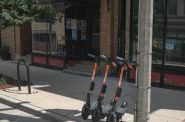 Dec 19th, 2019 by Tom Bamberger
Dec 19th, 2019 by Tom Bamberger
-
Homeless Tent City Is a Democracy
 Aug 2nd, 2019 by Tom Bamberger
Aug 2nd, 2019 by Tom Bamberger






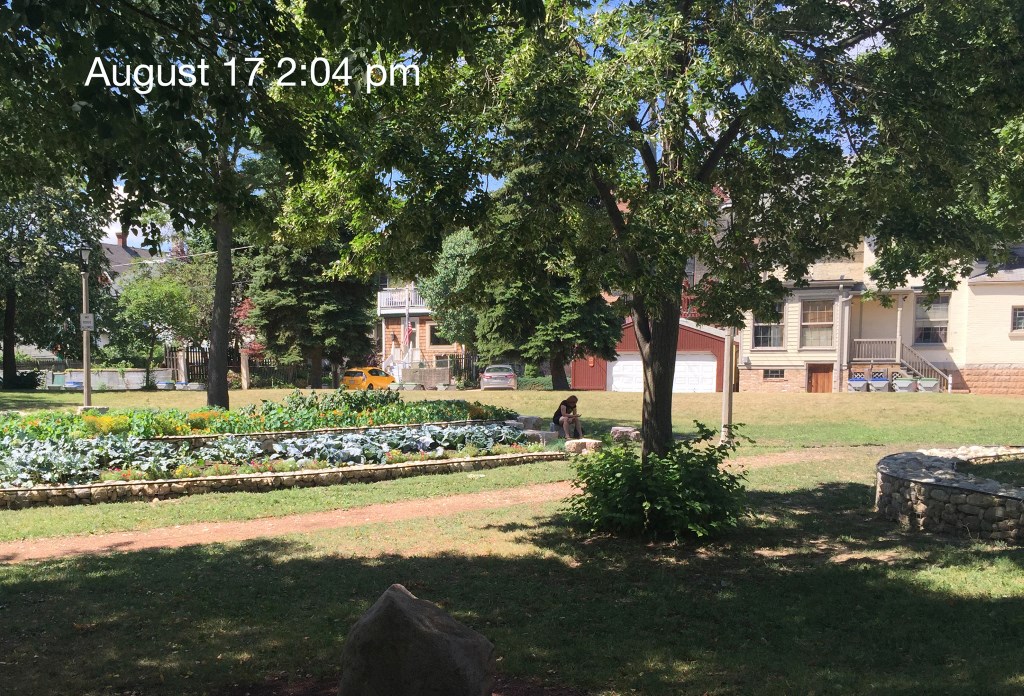


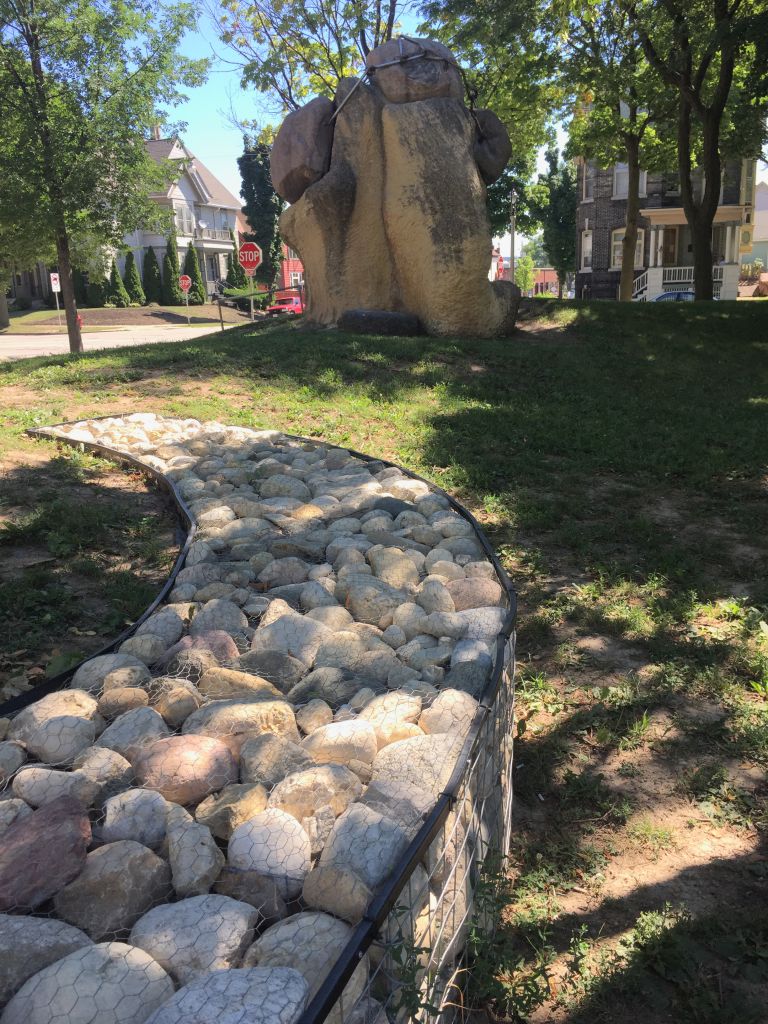
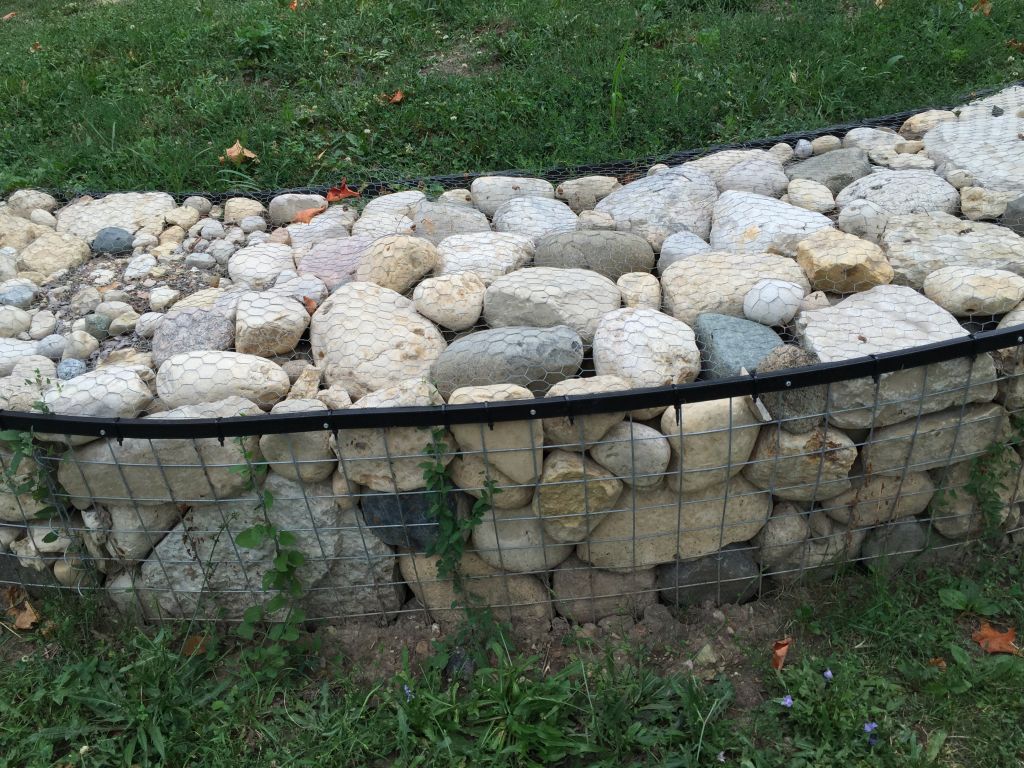
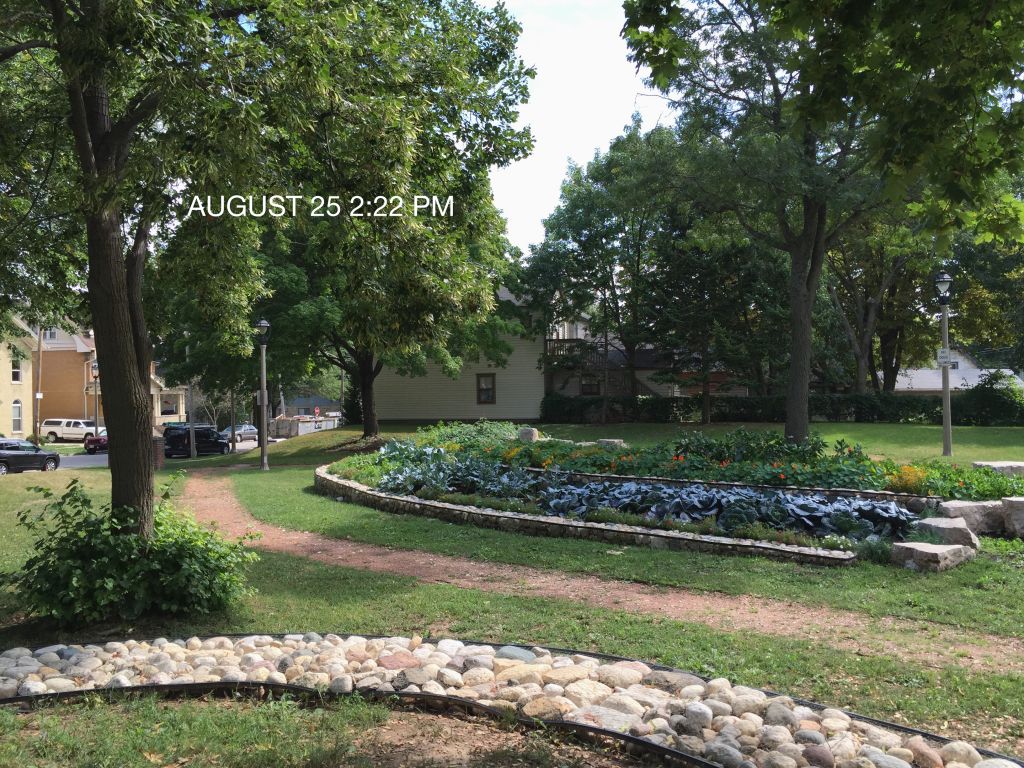





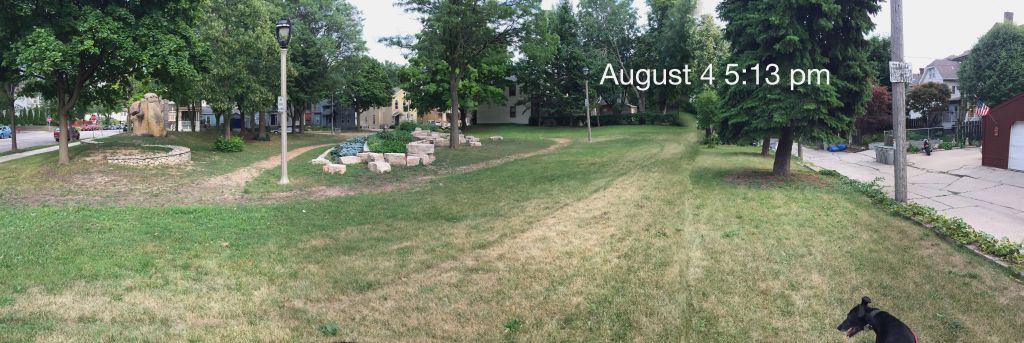


















The large “No Dogs Allowed” signs are also incredibly unwelcoming. I mean, come on.
I love you Tom. Ursula Twombly is a retired architect, how can she be called a park planner. She’s identifies herself more as a community leader in recent years. Please remove and start with a clean slate.
This article is spot on. I live in the Walnut Hill neighborhood and so many “garden” or “park” projects that sound good turn into maintenance nightmares which no one claims responsibility for after the initial installation. Bottom line in an age of limited resources: Stick to the basics – keep it simple, keep it low maintenance, and keep it clean. Nature is beautiful by itself.
Wow, that is one ugly rock. Interesting article.
Jesus what a disaster. It’s a shame the City doesn’t have a more cohesive (or even thoughtful) gameplan with respect to its parks. Any visitor or prospective resident would laugh at this mess.
DemCo: I totally agree with your statement that “Nature is beautiful by itself.”
Please forgive me for using this as an opportunity to pivot to another location…..and previous commentary by Mr. Bamberger…..
After reading this item I went back to see Mr. Bamberger’s comments re: the Lakefront Gateway project and I am listening to his interview on WUWM LakeEffect from last year.
Perhaps ugly mistakes can be avoided regarding the lakefront.
There is a meeting on Monday to solicit community input.
Here is a partial cut and paste from an invitation someone forwarded to me:
…
Community Input on new Lakefront Gateway Plaza – Meeting Invitation
The City of Milwaukee, in cooperation with Milwaukee County and the Greater Milwaukee Committee, and with the design team and adjacent stakeholders, is in the process of gathering community input for an exciting project on the downtown lakefront.
Please join City Planning Staff and the GRAEF design team at this public engagement meeting for a brief presentation on the Lakefront Gateway Plaza and an opportunity to provide your input on the design and programming of this future showcase park.
When: Monday, October 31st
Time: 5:30-7:30 pm. Doors will open at 5:30 pm, presentation from design team at 6:00 pm, public participation following.
Where: Milwaukee War Memorial Center, 750 N Lincoln Memorial Drive
…
Mr. Bamberger, I hope you will be there to speak on behalf of avoiding ugly errors.
Beyond the aesthetics, which can be argued to a fare-thee-well,one thing in particular struck me: In the photos, I see no place to sit! Also, I saw one narrow, barely walkable path. It’s no wonder that the park is empty of humans. The space is inhospitable, even if you like the sculpture and other accouterments Who wants to enter a park in which it is uncomfortable to walk, and where there is no place to sit, contemplate, chat with friends and acquaintances, read, or eat a brown bag lunch? The old space may not have been all that inviting, but it was not aggressively uninviting. What you have now is an exhibition of unrelated pretty things, but not a small city park.
In this article, Tom complains about the effects of the changes he demands in his “The Emerald Void” article in July 2009 Milwaukee Magazine. The 2 articles don’t totally contradict each other but indicate that he’s coming around to the idea that people DO want to just quietly sit “in a dense urban neighborhood” like that next to Juneau Park and look at a statue of Solomon Juneau (if only Milw. County Parks would cut down the wall of trees on the bluff), that people DO want a park that’s more than just a corridor to the lakefront, and that a park that responds to its “contemporary context” means a park “that draws you in” to a green & friendly place – one the people who disappeared from the Walker & 3rd Sts. park now miss. I’m not against improvements or new ideas but won’t endorse Tom’s “blow it up and start all over” demand in 2009. One only need look at Lake Park’s neighbors’ outrage at losing the historic ravine bridge to realize that original park amenities are cherished. I agree that our parks need better coordinated efforts to improve than those funded for the Walker’s Point pocket park and also agree with Tom that “Space is the place in cities.”
Good intentions gone bad! We have the same issues here in Shorewood. A small group of people with “good taste” and an open space is a combination that is detrimental lovely secret corners at the edges of our town. Unless the citizens can organize and stand up the “good taste” folks are out of control trying to “improve neglected” spaces. These spaces are used by many people every day. However, many of these plans are hatched out behind closed doors. When the word gets out, it’s too late to organize and we are all victims to the “good taste” crowds. Ugh.
I harvested some Italian parsley there which was excellent. But the berm is poorly filled with rounded rocks, where rough rocks would work better, you can’t sit on it,/and the garden is very hard to access for a raised bed. The alley presents the best view, namely of the neighbors’ attempts to screen this from their sight.
Lisa,
Glad to see you are keeping up with my writing.
Regarding the “contradiction” you point out. I am not sure what you are referring to.
The “Emerald Void” was about large parks. This one is about small park parks. There is
a difference, some voids are spaces and others are just empty places.
Lisa, I see no “contemporary context” in, nor am i drawn in by, Paliafito Eco-Arts Park. A boulder with metal on it and a chained up pile of rocks does not compare to the type of visionary ideas that have spawned a renaissance in urban parks in other cities.
Tom – In your 2009 article, you use Juneau Park as an example of a space that needs re-imagining, “a pleasant remnant from another time…neither connects nor responds to its contemporary context.” My point is that, as a small park, it responds to its contemporary context. “Who wants to sit in a park and look at a statue of Solomon Juneau?” you wrote Well, lots of us do because the view is open to the lake view. “Doesn’t offer direct access to the lakefront” you criticized. Well, there are issues like ADA compliance and a very steep, unstable bluff and avoidance of a stable but solid wall of cement block as a view from the lake front. Walker’s Pt. park doesn’t even have a view and you sympathize with those who miss the formerly “empty” park because they can sit quietly in a small, uncluttered open space. I think we’re in agreement in today, but your 2009 article specifically used Juneau Park as an example of a park that needs purpose beyond what it offers. Let’s agree that with a view, it would be a polished gem in the Emerald Necklace.
Tom, thanks for this thorough and thoughtful analysis. This saga seems very sad, given all the money, time and good intentions invested. It sounds like PEOPLE were not the focus of this haphazard process. And if people don’t find a public space appealing there is something very wrong with the place, no matter how eco-oriented or full of “art” it is.
As you pointed out, a bench was removed and not replaced. Who made such a people-repelling decision. As you wrote in a recent column, there are countless public spaces in Milwaukee without ANY seating or comfortable seating options. Lively public spaces have lots of seating, including in shade.
We Milwaukeeans would benefit by having public dialogs about the value and roles of public spaces and what makes them successful, well-used gathering places. (“Natural areas” pose different issues, but accessible trails and such are essential if they are meant for public use.) Milwaukee has some exceptional parks but also a lot of missed opportunities–which devalue the urban experience. Even businesses are lamenting the lack of adequate and appealing public space downtown.
The Project for Public Spaces has lots of good info on this topic, including this.
http://www.pps.org/reference/grplacefeat/
Lisa,
You make a good point. No, I don’t want to look at the statue of Mr Juneau anymore, but that doesn’t mean there are not other things to look at. Like the lake, for example. In the article I suggested opening up views to the Lake, which has been done.
The more general point of the article was to consider updating our Olmsted inflected parks. I still think that is a good idea, in theory. Of course we still have to come up with a better idea. That is not so easy, as this article points out. We should first try to do no harm before we try to do good.
Tom,
Really, really harsh piece here. Do you truly think the park creators forgot about seating? Like it never crossed their mind? Pretty sure this park is being built in phases. Bigger point, as one who travels the city daily, did anyone else notice the emptiness of ALL non-Pokemon parks this summer in the sadly more crime-ridden neighborhoods?
The social tension changed this year with the increase in shootings and crazy, reckless driving: folks don’t feel comfortable in our parks in lower-income areas. Kids stay inside, less folks hang on porches. Tom, don’t pin a societal issue on 2 creative young park designers. As another commenter noted, read PPS’ Power of 10 – that is the new mantra for public spaces. Who are you to judge what 600,000 people want in a park? Tom, please pick on someone your own size and age. This park is 1/2 built for Christ sakes!
I’d like to add that as Arts @ Large programs community events and uses this park as an outdoor classroom it could become more activated. They’re an organization doing great work with K-12 students. Welcoming benches could certainly help.
http://www.artsatlargeinc.org/
http://www.artsatlargeinc.org/paliafito-eco-arts-park
Grass-roots efforts are creating numerous public spaces from the ground up in Milwaukee—from pocket parks and community gardens on vacant lots to Three Bridges Park and the Rotary Centennial Arboretum. That’s a positive trend–even as there is sometimes trial-and-error in the evolution of those places. As Tom notes, a guiding design hand and greater community awareness about what makes public spaces succeed can help ensure that those places draw people and serve community needs.
Chuck,
You mention I picked on 2 young park designers. Who are they? According to my story there were no park designers, hence no design. And the park suffered as a consequence.
Here’s a link to the the Project for Public Spaces’ Power of 10 concept Chuck W. mentioned.
http://www.pps.org/reference/the-power-of-10/
PPS briefly worked in Milwaukee last year when they awarded a grant for a project at 4th & Wisconsin to explore options for creating a public space on part of that long-vacant, prime city lot. The plug was abruptly pulled on that effort when the city decided to issue an RFP for the entire site.
Our Fair City could really benefit from adopting some tried-and-true PPS principles and practices about public spaces. I hope some entity will bring PPS back to help Milwaukeeans plant more seeds for a public-place renaissance. We’re lagging on this front.
Well reasoned and articulated article Tom. I wish I could say I’ve been a long time follower of your writings and a resident that can experience and come to terms with the places you write about, like this small neighborhood space. Alas I live far away and have since 1984. My training in Landscape Architecture and practice in private and public garden design gives me a strong predisposition. This is a classic of example of zero master planning. An extensive fact finding/space defining process known as site analysis, would have revealed the proper design, flexible for years to come. Maybe it’s a work in progress as some have suggested. Backwards, I would agree.
MARY!
Glad you were able to find my little article about a little park in place you haven’t lived in for 30 years.
(has it really been that long?)
Thanks for your comment.
A similar meme happened on the triangular section at Wells, Plankinton and 2nd streets. It was little crossroads park with a two benches. Everyone knows chairs and benches are good in public spaces.
Now Newaukee got a grant and had some money to spend and boy did they.
Now, this tiny angular green strip between three streets is festooned with about a dozen bright blue seating opportunities. Wow. There are so many chairs, there’s no room to sit down and take a load off. Its too busy. There are enough benches to fill MacArthur Square, which is a city space that needs revitalization.
Mary Zebell: hi there. Modest you are Mary, in failing to mention that you and Terese Agnew were responsible for the lovely little Ziedler Memorial Park. I haven’t been there in several years, but when I did visit, it was a serene space smack dab in urbanville. When you are in Milwaukee, do you visit the place?
There is a lovely pocket park at the far west end of Brady Street. I hope it hasn’t grown into an example of non-profit proliferation. ….
Tom, this is an old article now so you may not still be getting comment replies, however I did want to say as a new resident to Walker’s Point that I have had similar feelings about the awkward stone “sculpture” and the caged rock wall. Like the veterans memorial downtown near the lake front, the space is void of any invitation to get closer.
Things have been steadily progressing in the Paliafito park this summer. I wonder if the finished product will be more like what we have been hoping for. I would be interested in reading an updated analysis from you when it is complete.
Personally I would like to see more fountains in our public park spaces.